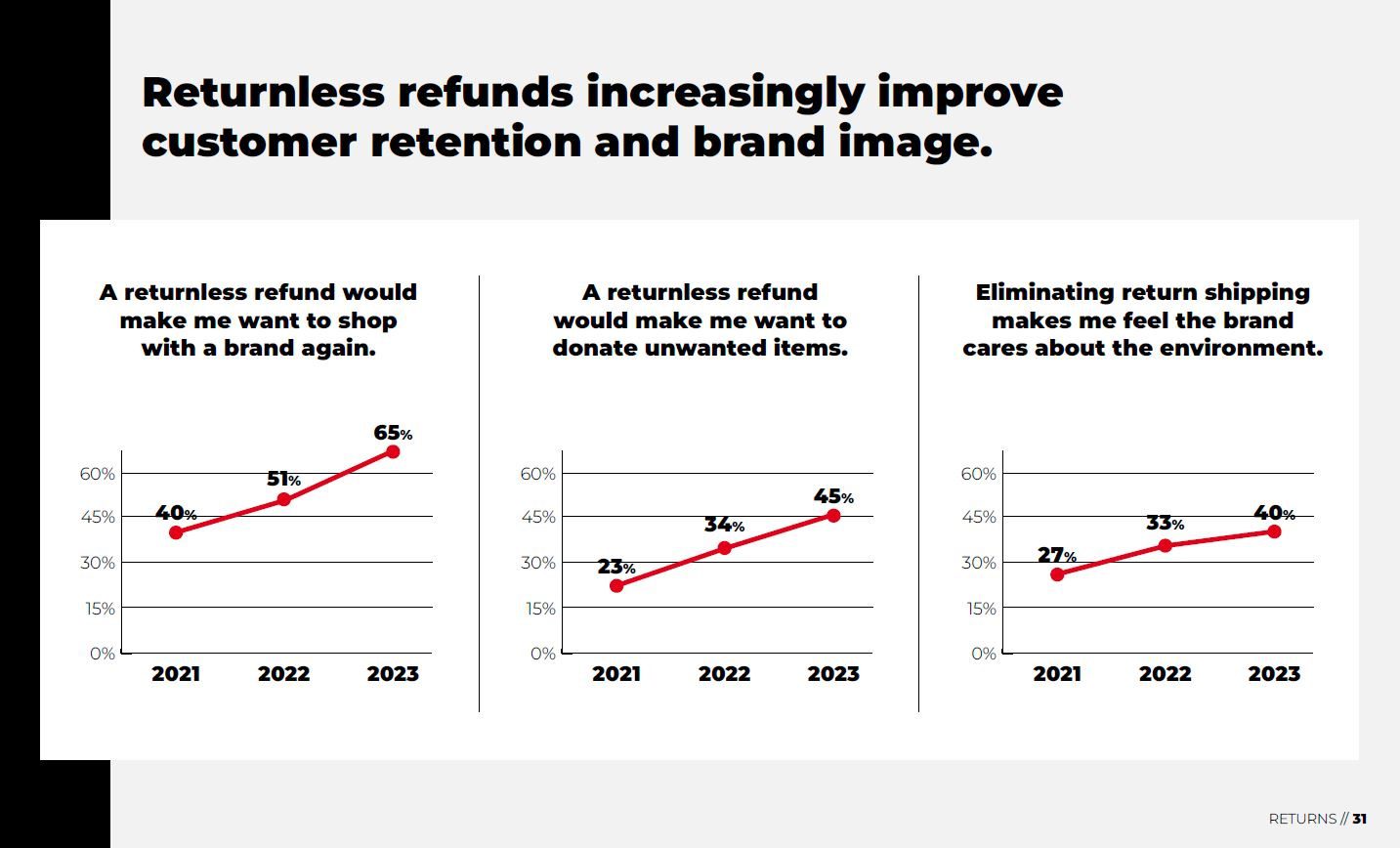Retail’s busiest returns period may be in the rearview mirror until next year, but rising ecommerce order volumes have caused returns management to become an aspect of ecommerce and omnichannel business that warrants a dedicated year-round strategy.
Returns are a major cost of doing retail business of any kind, but especially online. According to a report released in December by the National Retail Federation and Appriss Retail, for every $1 billion in sales, the average retailer incurs $145 million in merchandise returns. Online sales see an even higher return rate, with $247 billion (17.6%) of all merchandise purchased online returned.
Under ideal circumstances, reducing rampant returns is best accomplished through improving the issues that are most frequently leading to them. Common missteps that mismanage customer expectations include inaccurate online product descriptions, low-quality images, lack of inventory visibility or accuracy and inadequate sizing details. In an effort to reduce sizing-related return rates, some fashion brands are working with Fit:Match.ai, a ‘digital twin’ matching platform that uses AR body-scanning technology designed to help shoppers select their size more accurately. This is just one example of how companies are utilizing technology innovations to prevent returns up front.
Circumstances aren’t always ideal, though, and the tools brands need aren’t always within immediate reach. While returns can’t always be prevented, they can be leveraged to improve profit margins and even generate revenue. As the rate of returns has risen, retailers have been employing various tactics to mitigate them across the board. While some are charging customers fees to simultaneously slow and offset rising costs resulting from elevated return rates, others are adopting returnless refund policies.
Advertisement
This approach — where customers are refunded without being required to return an unwanted item — has its place, but it’s not a blanket solution. While it can certainly offset labor and transportation costs associated with return logistics, such as return shipping, disposition, refurbishment and destruction, there are many variables in the mix of determining whether this approach can help shelter profits. Processing an individual return sometimes exceeds an item’s value, leading some companies to deem all items priced up to a certain dollar amount as eligible. Returnless refunds also make sense for companies shipping heavy or bulky items that are more expensive to ship. The list goes on, but the profit margin associated with an item is a key factor to consider.
At a time when acquiring a new customer is five times more expensive than retaining a current customer, there is another return on this investment that might be even more lucrative in the long run. Returnless refunds are improving the almighty customer experience, and in turn, their potential customer lifetime value.

According to Ryder’s 2023 ecommerce consumer study of 1,077 U.S. online shoppers, Adapting to Inflation: Consumer Outlook on E-commerce, company return policies have had an increasingly significant impact on consumers’ purchase behavior and brand sentiment: 56% say they won’t even make a purchase from a company that doesn’t offer a free return policy. More to the point, though, is that 65% of respondents confirmed that returnless refunds motivate them to shop with a brand again (+14% YOY and +25% from 2021).
In that same study, 40% of online shoppers agreed that, when a brand eliminates return shipping with returnless refunds, it makes them feel like the brand cares about the environment (+7% YOY and +13% from 2021). Given the growing importance consumers – especially younger shoppers – place on brands’ sustainability efforts, this is a boon for brand sentiment and affinity.
Brands are always looking at innovative ways to remove friction from the brand experience, and returnless refunds are a great example of this evolution of retail. Whether it’s the excitement of getting something for free, the relief in not having to ship back an order, feeling good about donating an unwanted item to charity or playing a part in reducing packaging waste, sending a customer an email saying, “feel free to keep or donate the item you were planning to return” scores major customer experience and satisfaction points.
Of course, no good deed goes unpunished. While returnless refunds can reduce friction and help foster a more favorable brand image, they also play a role in growing concerns over return policy abuse. In response, companies are turning to digital solutions such as automated tools and data analysis to monitor and analyze customers’ return behavior, providing visibility into potential abuse to be dealt with accordingly. Over the next few months and years, expect to see more technology tools designed to mitigate abuse.
The rapid consumer adoption of ecommerce over the last 10 years — and the last four in particular — has given birth to a massive ecosystem of technology working to make this retail channel better for brands and consumers alike. In considering how to not only retain a desirable customer but how to earn their coveted loyalty, your mindset should be to do whatever you can to try to exceed their expectations, just not at the expense of your bottom line. When contemplating the profitability of returnless refunds, the main question brands must consider is whether keeping a customer is more valuable than the cost of their return.
Jeff Wolpov is SVP of E-commerce for Ryder E-commerce by Whiplash at Ryder System, Inc., a leading supply chain solutions, dedicated transportation and commercial fleet management company. He is responsible for leading the vision and strategy for Ryder’s ecommerce and omnichannel fulfillment solutions, driving business expansion and achieving revenue growth.




